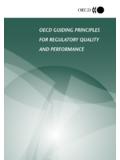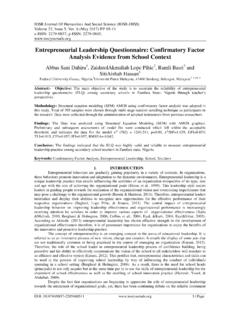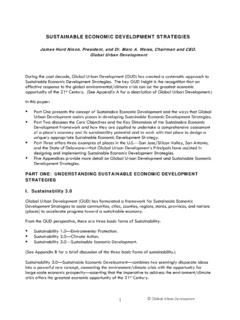Transcription of Gender inequalities in rural employment in Malawi …
1 Malawi COUNTRY PROFILE Appendix 1 Policy Context Prepared by the Gender , Equity and rural employment Division of FAO 2011 Gender inequalities in rural employment in Malawi Policy Context 1 Malawi COUNTRY PROFILE Appendix 1 Policy Context Gender inequalities in rural employment in Malawi Policy Context The designations employed and the presentation of material in this information product do not imply the expression of any opinion whatsoever on the part of the Food and Agriculture Organization of the United Nations concerning the legal or development status of any country, territory, city or area or of its authorities, or concerning the delimitation of its frontiers or boundaries. The mention of specific companies or products of manufacturers, whether or not these have been patented, does not imply that these have been endorsed or recommended by the Food and Agriculture Organization of the United Nations in preference to others of a similar nature that are not mentioned.
2 All rights reserved. Reproduction and dissemination of material in this information product for educational or other non-commercial purposes are authorized without any prior written permission from the copyright holders provided the source is fully acknowledged. Reproduction of material in this information product for resale or other commercial purposes is prohibited without written permission of the copyright holders. Applications for such permission should be addressed by e-mail to or to the Chief, Publishing Policy and Support Branch, Office of Knowledge Exchange, Research and Extension, FAO, Viale delle Terme di Caracalla, 00153 Rome, Italy. Photos: FAO/Giulio Napolitano FAO 2011 1 TABLE OF CONTENTS 1. Gender LEGAL AND POLICY 2 Legislation and Gender 2 Early marriage and polygamy.
3 3 Land, property rights and Inheritance .. 3 Gender -related policies and programmes .. 4 National Gender Policy (2007-2011) .. 4 National Gender Policy (2000-2005) .. 6 National Gender Programme (2004-2009) .. 6 2. LABOUR-RELATED LEGISLATION AND POLICIES .. 8 Legal framework .. 8 Constitution of the Republic of Malawi (1994).. 8 employment Act (2000) .. 8 Worker s Compensation Act (No. 7 of 2000) .. 10 Technical, Entrepreneurial and Vocational Education and Training Act (TEVET Act, No. 6 of 1999) .. 10 Occupational Safety, Health and Welfare Act (No. 21 of 1997) .. 10 Labour Relations Act (No. 16 of 1996) .. 10 Children and Young Persons Act (Cap. 26:03, 1992) .. 11 Trade Unions Act (No. 32 of 1958) .. 11 employment -related policies and programmes .. 11 National employment and Labour Policy (2011-2016) .. 11 Workers Social Security 14 3.
4 AGRICULTURE SECTOR POLICIES AND PROGRAMMES .. 15 Agriculture Sector-Wide Approach (2010) .. 15 National Agricultural Policy (2011-2016) .. 16 4. OTHER RELEVANT POLICIES AND PROGRAMMES .. 17 Malawi Growth and Development Strategy (2006-2011) .. 17 UNDAF II (2012-2016) .. 17 National HIV/AIDS Policy (2003) .. 18 National Youth Policy (1996) .. 18 Policy and Investment Framework (PIF) for the Education Sector (2000-2015) .. 18 2 1. Gender LEGAL AND POLICY FRAMEWORK During the last two decades, Malawi has made numerous commitments to promote human rights and Gender equity by signing and ratifying various international and regional treaties and conventions. Some of the most significant signed treaties and conventions include: Treaty/Convention Year Convention on the Elimination of All Forms of Discrimination Against Women (CEDAW) 12 Mar 1987 (Accession)
5 CEDAW Optional Protocol to the convention on the elimination of all forms of discrimination against women 2000 The International Conference on Nutrition 1992 Convention on the Rights of the Child 1991 Human Rights Conference in Vienna 1993 International Conference on Population and Development in Cairo 1994 World Summit for Social Development in Copenhagen 1995 Fourth World Conference on Women in Beijing 1995 SADC Declaration On Gender and Development and Its addendum 1997 Protocol to the African Charter on Human and Peoples Rights on the Rights of Women In Africa 2005 Legislation and Gender disparities The Constitution of Malawi was adopted in 1994 and consists of 23 Chapters and 215 sections. It seeks to enshrine the principle of equality not only in general terms but it is also quite specific in mandating Gender equality (section 13), promoting women s rights (section 24), and prohibiting any kind of discrimination based on Gender (section 20), even though it does not legally define The Constitution also prohibits the National Assembly or any subordinate legislative authority from creating any law or taking any action that would abolish or infringe on people s rights and freedoms as enshrined in the Constitution.
6 To bring law into compliance with constitutional standards, the Malawi Law Commission, an independent legal institution established in 1998, has been in the process of revising national Gender -related laws since The first phase of this review involved reviewing the Wills and Inheritance Act, while the second phase focused on marriage and divorce The final phase focuses on the development of a regulatory statute on Gender equity that will, among others, give provisions on Gender equity in education, political participation and the promotion and visibility of women in the public In the Gender Equality Statute, the Commission aims to cover all issues related to Gender equality that were not covered in the previous reviews on inheritance legislation and marriage related In recent years, the Law Commission has reconstituted the special Commission on Gender Related Law Reforms.
7 The programme for 2009 indicated that the new Commission would finalize the development of the Gender Equality 1 CEDAW, Pre-session working group, Thirty-fifth session, 15 May-2 June 2006. $ 2 See: and 3 The first phase ended in 2003 and the second phase was completed by December 2005. 4 Malawi Law Commission: 5 CEDAW, Pre-session working group, Thirty-fifth session, 15 May-2 June 2006. 6 At the time of writing, the Gender Equality Statue had not yet been published. Malawi Law Commission, Notice of Work Programme for 2009: 3 Despite the adoption of constitutional and legal reforms that address Gender -based discrimination, progress towards Gender equality in society has been slow because of the wide discrepancy between formal and customary law and because many Malawians rely much more on traditional justice forums.
8 Customary law defined and applied by traditional justice forums, which are largely presided over by village heads or chiefs7 often acts to preserve patriarchal cultural and traditional values and practices, which tend to be biased against women ( polygamy, early marriage and wife inheritance). Though formally suspended since 1994, traditional forums are still an important judicial reference in Malawian The nullification of oppressive provisions in customary laws can only be carried out by the constitutional court. Most rural poor, however, do not have access to the juridical institutions and legal services that would enable them to preserve their rights. This is particularly the case for rural women due to mobility constraints as a result of their productive and reproductive work, lack of economic resources, as well as illiteracy and unfamiliarity with laws.
9 Although poor rural men also face these constraints, rural women are more disadvantaged and face more obstacles in acquiring the rights they are entitled to according to the Constitution and statutory Early marriage and polygamy Customary law legitimizes discriminatory practices such as polygamy, early marriage and wife inheritance in both matrilineal and patrilineal communities. These customary practices are reinforced by societal Gender -stereotyped attitudes that deem women as inferior to The Malawi Law Commission developed the Marriage and Divorce Relations Bill in 1996, which recommended the prohibition of polygamy, on account of its discriminatory effect and negative impact on women. While formal civil law defines marriage as a monogamous union and polygamy is prohibited by the Penal Code, polygamous unions are often accepted by customary law and practices.
10 It is estimated that one-fifth of all married women are in polygamous unions11, which is mainly practised in the Northern and Southern The Bill also aims to increase the minimum legal age of marriage from 16 to 18 years. As of March 2010, the Marriage and Divorce Relations Bill had yet to be endorsed by the Government of Land, property rights and Inheritance Traditional roles of men and women and inequalities in access to land and other physical assets undermine the socio-economic empowerment of women and diminish their competitiveness in the rural economy. According to the National Census of Agriculture and Livestock (NACAL) 2006/07, about 80 percent of land used by agricultural smallholders was customary Eighty-three percent of land in the Northern region was customary land, compared to 76 percent in the Central and Southern regions, respectively.














